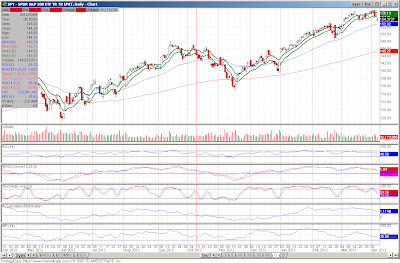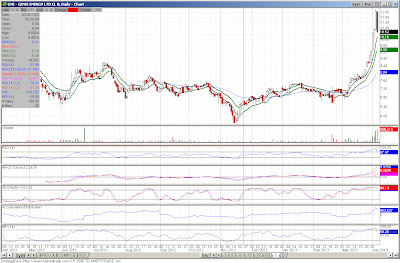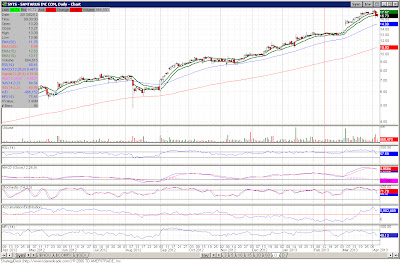This article was originally posted to the Mises.org site. I have to admit I really do not know much about bitcoins, except for some rudimentary high-level details. This articles reads like a good primer on the 'money'
Bitcoins have been much in the news lately. Against the background of
renewed concerns about the integrity of the euro zone and the imposition
of capital
controls in Cyprus, the price of a bitcoin has tripled over the last
month and reached more than $141 for 1 BTC. Are we witnessing the
spontaneous
emergence of an alternative virtual medium of exchange, as some would
put it? This article offers an answer to this question by considering
three aspects
of the economy of bitcoins: their production process, their demand
factors, and their capacity to compete with physical media of exchange.
The Production of Bitcoins
A bitcoin is a unit of a nonmaterial virtual currency, also called
crypto-currency, by the same name. They are stored in anonymous
“electronic wallets,”
described by a series of about 33 letters and numbers. Bitcoins can
travel from a wallet to a wallet, by means of an online
peer-to-peer network
transaction. Any inter-wallet transfer is registered in the code of the
bitcoin, so that the record of its entire transaction history clearly
identifies its owner at any single moment, thereby preventing potential
ownership
conflicts. Bitcoins can be further divided into increments as small as
one 100 millionth of a bitcoin. The current outstanding volume of
bitcoins is above
10 million and is projected to reach 21 million in the year 2140.
This brings us to the truly fascinating production process of the
bitcoins. They are “mined” based on a pre-defined mathematical
algorithm, and come in a
bundle, currently of 25 units, as a reward for carrying out a large
number of computational operations that aim at discovering the solution
to what could
be described as a randomized mathematical puzzle. The role of the
algorithm is to ensure a declining progression of the overall stock of
bitcoins, by
halving the reward every four years. Thus, somewhere in the beginning of
2017, the reward bundle will consist of 12.5 units only. Also, the more
bitcoins
are produced, the harder are the randomized mathematical puzzles to be
solved.
Bitcoins come about as the uncertain pay-off for an energy—and
hardware—-consuming process that is extended through time. The per-time
pay-off varies,
based on the efficiency and sophistication of the more-or-less specific
hardware used for the mining. Individual miners have started to pool
their efforts,
and this cooperation has tremendously reduced the uncertainty that each
individual miner bears.
Due to this costly production process, bitcoins, although virtual, are
constrained by scarcity. While a bitcoin has no material shape or
content, the
algorithm that generates it has been designed to replicate the
competitive production of a scarce good. First, entry in the business of
producing bitcoins
is open to anybody. Second, the production process is capital and labor
intensive, extended through time, and also uncertain. Third, production
is subject
to decreasing returns, thereby conforming to the generalized scarcity
faced by acting individuals in the better-known physical world. Thus,
bitcoins turn
out to be the exact opposite of the “Linden dollars” of the
Second Life
“virtual world.” The latter
are produced by a monopolist central authority, out of thin air, and
without any other limitation but the very discretion of that same
monopolist
authority.
However, it is not their costs of production that bestow on bitcoins the
status of an economic good. After all, scarcity is not rooted in the
absolute
quantitative limitation of something; it comes from the insufficiency of
the stock of that something, perceived as useful in some regard,
relative to the
individuals’ needs. Hence, we must ask ourselves how bitcoins have come
to be valued at all. This leads us to an analysis of their demand.
The Demand for Bitcoins
At their inception, bitcoins were created and first held within a
“crypto-punk” community. It could then be safely assumed that they
served the purpose of
conveying a specific antiestablishment worldview. The first demand
factor, initially for producing bitcoins, and then unavoidably but only
indirectly for
holding them, was rooted in their capacity to project a certain point of
view. In a sense, bitcoins were comparable to an artistic medium of
expression,
such as music, literature, and painting.
Thanks to that initial source of value, bitcoins had a reference point
that positioned them relative to other goods and services. From there
onward, the
technological features that characterize them led to an expansion of
their demand. Bitcoins are imperishable. Storage and protection against
theft or
accidental loss come at a very low cost, as these are accessory services
rendered by standard antivirus and back-up software. Marginal
transaction costs
are also practically zero, once the fixed cost of establishing and
maintaining a network connection has been accounted for. All these
aspects are common to
real wealth assets. Thus, the second demand factor for bitcoins is
explained by their capacity to store wealth at a low cost. From the
status of a good
which, as a “worldview-conveyor,” was largely used for personal
enjoyment (and hence consumption), bitcoins evolved into an investment
good that has become
attractive well beyond its original crypto-punk community.
The growing investment demand also spurred the development of
intermediary dealers in bitcoins. There are a number of exchanges where
bitcoins can be
bought and sold against currencies. Specialized online storage,
presumably with increased security, has also been made available.
Intermediation, though
open to free entry, is likely to remain rather monopolistic, given the
very low margins associated with transacting in and with bitcoins.
This latter aspect, namely the intrinsically low transaction fee,
contributes to a third demand factor for bitcoins, namely as a means of
payment. A number
of online vendors, who are mostly specialized in web-related services
and online sales of rather exotic items, accept final payment in
bitcoins, not the
least because of the guarantee for almost absolute anonymity. This last
component of the demand for bitcoins is still nascent. After all, a very
limited
set of items can be purchased with bitcoins, and sellers still price
their goods in dollars, euros, etc. The price is then converted into
bitcoins,
according to the prevailing exchange rate, at the final stage of
finalizing the payment method of the transaction. Thus, while bitcoins
do appear to serve
as a means of payment, they are definitely not used yet for business
calculation. This is most certainly attributable to their still very
limited demand to
hold as a means of exchange. Nevertheless, couldn’t they become
full-fledged money in the foreseeable future?
Bitcoins as Money
Prima facie, bitcoins possess all the qualities required from a money (a
generally-used medium of exchange). They are perfectly homogeneous,
easily
cognizable, conveniently divisible, storable at practically no cost, and
imperishable. Also, they seem to be fully shielded from counterfeiting.
In addition, because they exist as a consumption and investment good,
they are appraised on their own, thereby satisfying the
Misesian regression criterion
for the free-market inception of a medium of exchange. However, in
order to become a viable alternative to existing monies, bitcoins must
generate a sufficiently large demand so that their usage becomes
generalized. Without the certainty that they can be transacted for any
other good in the economy, a demand to hold them as money could not
develop. It is
with respect to their capacity to become and
remain commonly used that bitcoins suffer from a relative disadvantage.
Indeed, bitcoins are embodied in a specific and highly capital-intensive
technology. They can become convenient enough for standard personalized
transactions only if both parties of the exchange possess the necessary
technology that gives access to bitcoins. Bitcoins can do the job
already for
internet-based impersonalized purchases, because the marginal cost of
the exchange technology they go along with is already almost zero
for those who possess it.
However, the transposition of that technology in the physical world of
common face-to-face shopping (getting a haircut,
buying a sandwich, or purchasing vegetables at the local grocery shop)
would imply extra costs. True, these costs would decrease progressively
as portable
smartphones with permanent internet access become more widely used, not
only by buyers, but also by sellers. The key point, however, is that
bitcoins could
become a generalized medium of exchange
only through the accessory use of other, specific and physical, goods in an economy that has reached a
very high level of technological development. This is a tremendous disadvantage, for at least two reasons.
First, at any given moment, the level of technological development is
not uniform for all individuals within the same (national) economy.
While some have
access to the latest technology in a given field of activity, others
prefer to stick to older versions. This is definitely due to the cost of
replacing
existing capital goods, but also to individual preferences, and
sometimes to personal wealth. Consequently, bitcoins could become money
only at the point
when the technology that embodies them becomes commonly used. We are not
there yet.
Second, an economy in which the medium of exchange is dependent so much upon the widespread use of a
specific
technology would be extremely
vulnerable. Technologies are not given; they are the result of
individual choices with respect to capital accumulation and allocation
that must be made
time and again, and are subject to reversal. Then, if the
medium-of-exchange-linked technology is abandoned, because for instance
no sufficient savings are
available any longer, the economy will have to find another medium of
exchange. This transition phase might then involve significant
disruptions in the
structure of production. A technology-linked medium of exchange does not
provide enough flexibility to economic relations and might be viewed as
complicating, rather than facilitating, some actions, such as shifting
from one technology to another. This is a significant drawback of any
virtual
currency.
In trying to understand whether the increased popularity of bitcoins is
reflecting the emergence of a new money, we have actually come to a
fundamental
distinction between virtual and material media of exchange. The latter
are technology-independent and matter-embodied; the former are
technology-embodied and matter independent. This distinction is not
trivial as it emphasizes the great advantage that material money offers:
it is good
enough for anybody and at any time, and is independent from individual
choices with respect to investment, allocation and maintenance of
capital. Virtual
monies could be programmed to reproduce some aspects of material,
whether commodity or fiat, monies. However, they will always be
dependent on
specific capital investment decisions. The latter
reduce their degree of commonality as well as of adaptability to
changing economic conditions.
In conclusion, virtual monies, of which bitcoins seem to be the most
perfected specimen up to date, do not allow acting individuals to manage
the
uncertainty of the future as well as material monies do. They could
serve to intermediate exchanges among those who invest in the technology
that creates
them, stores them, and transfers them. Nevertheless, they could never
achieve that degree of universality and flexibility that material monies
carry with
them by nature. Thus, on the free market, commodity monies, and
presumably gold and silver, still have a great comparative advantage.



























